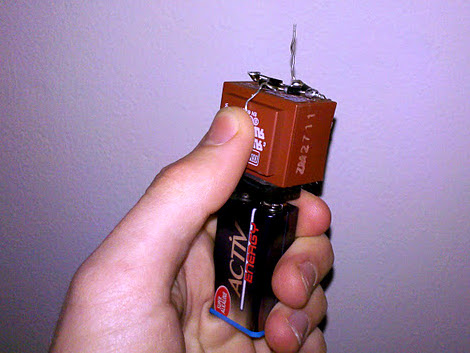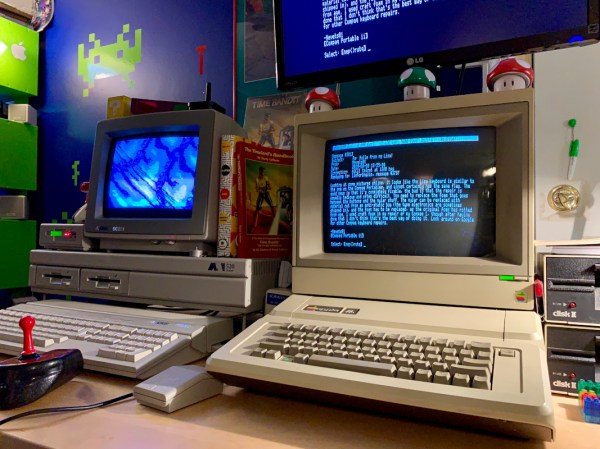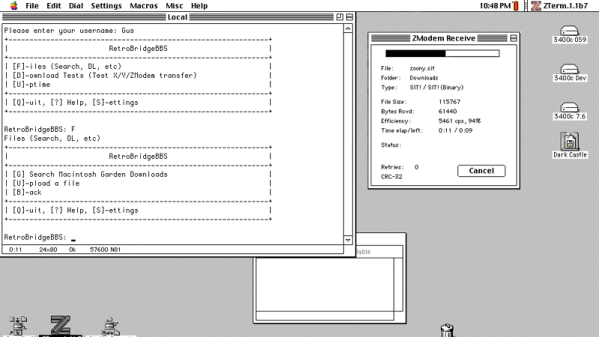We received belated word this week of the passage of Ward Christensen, who died unexpectedly back in October at the age of 78. If the name doesn’t ring a bell, that’s understandable, because the man behind the first computer BBS wasn’t much for the spotlight. Along with Randy Suess and in response to the Blizzard of ’78, which kept their Chicago computer club from meeting in person, Christensen created an electronic version of a community corkboard. Suess worked on the hardware while Christensen provided the software, leveraging his XMODEM file-sharing protocol. They dubbed their creation a “bulletin board system” and when the idea caught on, they happily shared their work so that other enthusiasts could build their own systems.
bulletin board6 Articles
A Handy Guide To The Humble BBS
Some of us who’ve been online since the early days fondly remember the web of yore — with its flashing banners, wildly distracting backgrounds, and automatic side-scrolling text. But there was a time before the worldwide web and the Internet as we recognize it today, and the way of communicating in this before-time was through Bulletin Board Systems, or BBS. There are still some who can cite this deep magic today, and this page is perhaps the definitive guide to this style of retrocomputing.
This how-to is managed by [Blake.Patterson] who is using a wide variety of antique machines and some modern hardware in order to access the BBSes still in service. He notes in this guide that it’s possible to use telnet and a modern computer to access them, but using something like an Amiga or Atari will give you the full experience. There are some tools that convert the telephone modem signals from that original hardware to something that modern networking equipment can understand, and while the experience might be slightly faster as a result, it does seem to preserve the nostalgia factor quite well.
For those looking for more specific guides, we’ve featured [Blake]’s work a few times in the past, once with an antique Epson PX-8 laptop and again with a modern ESP8266. It doesn’t take much computing power to get connected to these old services, so grab whatever you can and start BBSing!
A Faux BBS Gets Software On To Your Vintage Machines
Back in the golden age of modems and phone lines, bulletin board systems, or BBSes, were a great way to find new software from the comfort of your own home. Most have shut down over the past few decades, as the Internet took over as a more flexible method of cat picture software distribution. [equant] was a fan of browsing for warez through a text interface however, so recreated the experience in a way that’s useful today. The result is RetroBridgeBBS.
The software runs on a modern PC, ideally a Linux one that runs Python 3 and has a serial port. Then, you can hook up your old retro computers via serial using a null modem cable. Fire up appropriate terminal software on the retro computer and you’re rewarded with a BBS-like interface. From here, you can search selected online repositories for software, and download what you like. The host PC parses requests from the retro PC over the serial link, and shuffles back the requested files downloaded from the Internet. Currently it’s set up primarily for Macintosh users, with some useful features to avoid downloading StuffIt archives of the wrong version – a perennial frustration in the 90s. Future plans involve expanding the system to suit more platforms.
It’s technically anachronistic, but it feels like a period-correct way to get software onto a vintage computer. It’s also a great way to do so when you’re lacking appropriate floppy hardware, hard disk emulators, or network cards – all of which can be expensive and in short supply. There’s other ways to go about it, too, of course – you can do some nifty things with an ESP8266, don’t you know! Video after the break.
Continue reading “A Faux BBS Gets Software On To Your Vintage Machines”
Make Any Scrap Of Paper Sticky With 2000 Volts

Who needs chemistry when a little bit of physics will do? Instead of brewing up a batch of weak adhesive to make his own post-it notes, [Valentin] built this handheld device to add an electrostatic charge to bits of paper. Just give them a couple of seconds to charge and they’ll stick to the wall with ease.
The charging circuit is pretty simple, involving a transformer, transistor, resistor, and four diodes for rectification. He walks us through the build process, free forming the circuit using the transformer housing as a base. Once the circuit is fully assembled, a 9 volt battery connector is added and the fragile parts are hot-glued in place. It boosts the output voltage all the way up to 2 kV, but it’s still safe because it’s at a very low current.
The concept is akin to the high-voltage bulletin board seen last month. We wonder how long the notes will stay in place without an active electrical connection to keep the charge?
20 Kilovolts Replaces Push Pins On This Bulletin Board

Electrical Engineers don’t need push pins. That’s because they know how to control electrons! [Sven] put his knowledge of these subatomic particles to use when building his high voltage bulletin board. It uses a set of vertically strung wires to keep paper pinned against the board. The wires have high voltage at low current travelling through them. They’re in front of the board, but not touching it, and the board is serving as a ground plane. In this way an electrostatic charge pushes (or should that be pulls?) against the paper to keep each sheet right where he places it.
In the video after the break [Sven] gives us a tour of the hardware at work here. It starts with a 12V psu which feeds a buck converter. The regulated feed is patched into a high voltage supply which was designed as a CCFL driver. Finally, a voltage doubler is used to reach the final voltage, measuring about 20 kV per wire.
Don’t worry, [Sven] says the bare wire is “almost completely safe” because of the low current being conducted.
Continue reading “20 Kilovolts Replaces Push Pins On This Bulletin Board”
Hackaday Links: November 6th, 2011
Build details for Raspberry Pi prototype

With the launch of Raspberry Pi approaching the development team released the details about the prototypes from about five years ago. The board was originally based on an ATmega644 and built on some perfboard.
‘Zero Energy Device’ challenge

We call BS on the title of this one, but the goal of finding devices that don’t use disposable energy sources is a good thing in our book. For instance, can we get more stuff that uses long-life capacitors instead of batteries?
Command adhesive for mounting bulletin boards, etc.

This seems like a no-brainer, but we’ve been using nails to mount bulletin boards and white boards for year. The problem is, when you stick a push-pin in one side, the other side pops off of the nail. [Zhanx] is using adhesive from 3M Command Hooks to keep his stuck to the wall.
Servo-driven gripping hand

[Navic] has been hard at work on this robot hand. There’s few details but he shows it can grip objects under one pound and he’s been taking amperage measurement during testing.
Emergency cellphone charging

It might not have been an emergency this time, but [Chris] did figure out a way to charge his cellphone after the snow storm in New England knocked out his power. He connected to lantern batteries to a 7805 regulator, then patched that into a USB hub to get his phone connected. Not bad in a pinch!














